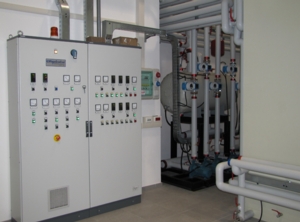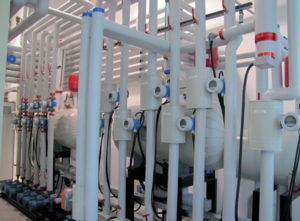FONDITAL SPA CASE HISTORY
An innovative design for the classification of heating units
 The residential building-heating sector absorbs approximately 33% of the national energy requirements. Considering the global situation from the standpoint of both the environment and fuel costs, it has become necessary to study the behaviour of heating plants and their components more in depth. In this respect, important role is played by the optimization of the interaction between the terminal heating unit (or heat source) and the environment to be heated.
The residential building-heating sector absorbs approximately 33% of the national energy requirements. Considering the global situation from the standpoint of both the environment and fuel costs, it has become necessary to study the behaviour of heating plants and their components more in depth. In this respect, important role is played by the optimization of the interaction between the terminal heating unit (or heat source) and the environment to be heated.
To achieve this aim, fondital asked Angelantoni Industries to implement the innovative design by Renzo Marchesi, engineer and Full professor of Industrial Technical Physics at the Piacenza Campus of the Politecnic Institute of Milan.
This design is based on the creation of special Thermostatic Test Chambers for classifying the carious terminal heating units.
The system developed in addition to providing accurate measurements in compliance with the European standard EN 442 enables the additional assessments necessary for determining more realistic evaluation indices for the different types of terminal heating units.
System description
 Thermostatic chamber and plant engineering for the control of wall temperature
Thermostatic chamber and plant engineering for the control of wall temperature
The main facility consists of three climatic chambers:
- This consists of walls cooled by a cryogenic cooling fluid having structural characteristics indicted in standard EN 442. This principle has already been used by ANGELANTONI INDUSTRIE for the famous chambers for Otzi the Similauni Mummy.
- The central panels of the wall behind the heating unit (ref EN 442) receive fluid by means of an autonomous circuit permitting the simulation of cold surfaces.
- In order to guarantee greater accuracy in controlling the temperature, two cooling sources have been provided. The working temperature range is between -10°C and +40°C.
- A special device combined with a controlled and positionable ventilation system makes it possible to evaluate the influence of the make-up air on the temperature distribution inside the thermostatic chamber and on the power exchanged.
- The temperature measurements are obtained through a mapping of different positions on the air and the walls.
- The mean radiant temperature is measured using special dedicated instruments.
- For the other measurements - velocity and flow - at least two simultaneous measurement points and three flow meters are used.
- Primary supply system
For the primary system supplying the heat transfer fluid to the terminal heating unit, a thermostat control system is necessary to ensure that the temperature remains stable, with an accuracy of ±0.5°C. - Secondary supply system
The housing of the test chamber is externally adiabatic, whereas it exchanges thermal energy with the internal air and directly by thermal radiation with the heating unit. For the purpose of a correct quantification of the phenomena surface temperature must be accurately determined. The method envisages the measurement of the incoming and outgoing temperature of every panel, the verification of the surface uniformity and a precise measurement. - Radiation measurement
Radiation measurement
The flow exchanged by radiation is of great importance as far as thermal comfort is concerned. Values must be measured with extreme accuracy. In addition to the surface temperatures, the operating temperature and measurement of the radiosity are very important. - Thermal and thermo fluid dynamics fields For the determination of the convective flow, a detailed knowledge of the thermal field and velocity field is necessary. An appropriate grid of sensors provides the essential information.
NOTE:P using the configuration indicted, a great variety of plant thermal situations can be reproduced, these can be used to compare the energy performance of heating and cooling terminals.
 Plant design for control of the heating unit temperature and flow rate
Plant design for control of the heating unit temperature and flow rate
Different terminal heating units vary considerably in their heat transfer fluid flow rate requirements. A flow rate control system is necessary that can ensure a constant value.
